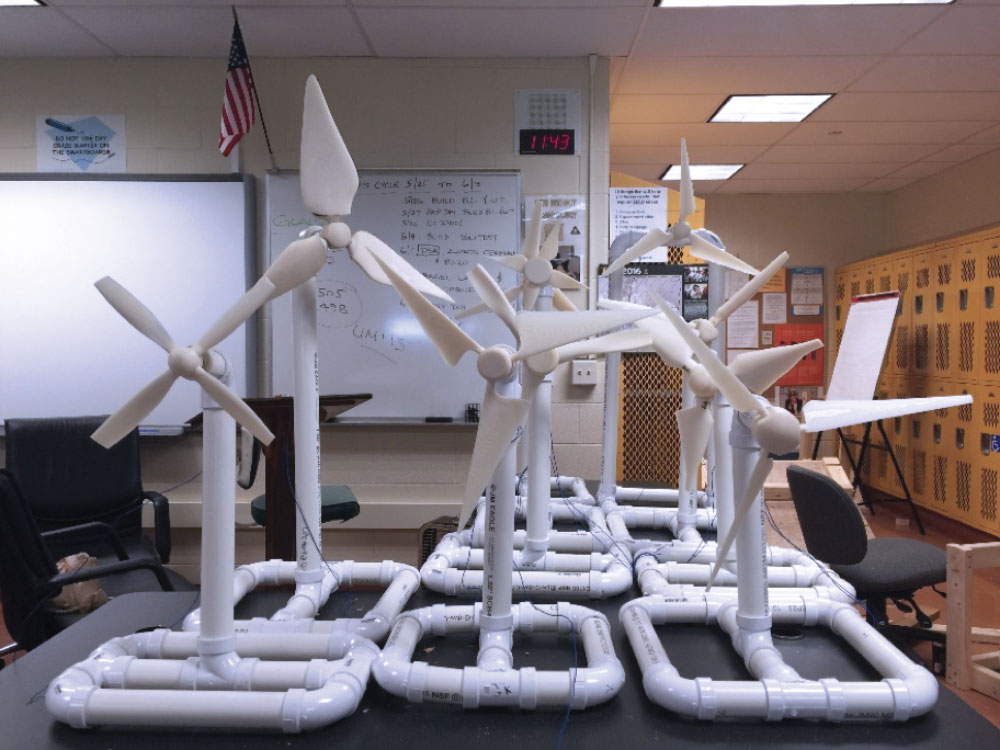MSE’s Tulsi Patel Shares Three Defining Moments at UConn
By Amanda Campanaro

Tulsi Patel, Ph.D. student in Dr. Hebert’s lab, stands beside a probe station connected to a ferroelectric test system that measures polarization-electric field (P-E) hysteresis loops.
In the future of aerospace engineering, it may be more efficient to 3D print structural components. Materials Science and Engineering Ph.D. student Tulsi Patel is investigating how to combine different materials in an additive manufacturing environment.
As an undergraduate in chemical engineering, Tulsi Patel, a graduate student in Dr. Rainer Hebert’s lab, was interested in alternative energies, which eventually led her to work on dye-sensitized solar cells for her Master’s thesis. Now, her interests have shifted to additive manufacturing, commonly known as 3D printing.
“My Ph.D. research focuses on multi-material additive manufacturing of metals and ceramics for aerospace applications,” Tulsi explains. “Specifically, I work on inkjet printing ferroelectric ceramics on conventional aerospace alloys to one-day pave a path to integrated functionality in structural components.”
The goal is to print functional elements, such as sensors, actuators, and active cooling, directly on and into the aerospace part, during the additive manufacturing process. The materials she is currently investigating are lead zirconate titanate (PZT) and barium titanate (BTO) for the ferroelectric ceramic, and Inconel 718 as the aerospace alloy.
When asked why she chose UConn’s Department of Materials Science and Engineering, Tulsi lauds the MSE laboratories and facilities, which advance the caliber of research being conducted. “The addition state-of-the-art microscopy and construction of a new Tech Park allows growth in industry-university partnerships and enables cutting-edge research to be conducted on campus. This contributes to the variety of research projects available and the many job opportunities for graduating students,” she says. “A major focus of this Tech Park is additive manufacturing and I have the opportunity to contribute to this effort as a graduate student.”
However, having completed both her B.S. and M.S. at UConn, her love for the school goes beyond its technological capacities. “As an avid fan and Connecticut native, I would not have the opportunity to see UConn basketball from the front rows of the student section elsewhere,” she says.
Additionally, she thanks her advisors, Associate Professor and Director of the Additive Manufacturing Innovation Center Professor Rainer Hebert, and MSE Department Head Professor Pamir Alpay. “They have been great mentors to me thus far in my Ph.D. and have fully supported my research interests. I have also gotten equally great mentorship from other MSE faculty members, both in and out of the classroom, as well faculty from other departments who have aided my research work.”

A “moon buggy” Tulsi helped the students at E.C. Goodwin Technical High school build for a NASA competition.
Of her years as a graduate student, Tulsi has experienced three significant, defining moments. First, she had the opportunity to spend a year in Italy as part of a dual-degree Master’s MSE program between UConn and Politecnico di Milano, where she worked in Fabio Di Fonzo’s lab. “Not only did I grow the most as a person and researcher during this time, but it was also the first time I developed an interest for materials science and engineering and decided to further pursue the field,” she explains.
The second experience involved spending two years visiting a local technical high school as part of the NSF GK-12 fellowship. “I developed valuable teaching skills and had the opportunity to encourage the next generation to pursue engineering.”
Lastly, while Tulsi spent last summer in South Korea as a NSF EAPSI fellow, she learned more about additive manufacturing technologies and its profound effect around the world. “Overall, I am so grateful for all the opportunities I have gotten as a student at UConn,” she says.

Wind turbines also built by students at E.C. Goodwin High school. Tulsi oversaw the development of these projects as part of the NSF GK-12 Fellowship.
As a NSF GK-12 fellow, Tulsi received a prestigious two-year fellowship that required her to visit a local technical high school on a weekly basis. “The objective of this fellowship was to conduct innovative research and communicate science and research to a broader audience.” Her duties include creating and executing lesson plans for high school students, and encouraging them to pursue STEM fields.
“Specifically, I visited physics and CADD classes at E.C. Goodwin Technical High School, and some projects I executed include: building a Moon Buggy (NASA competition), Rube Goldberg device, wind turbines, prosthetic legs, balloon-powered cars, bridges, and rollercoasters. Moreover, it was a wonderful opportunity that enabled me grow as a researcher and give back to the community.”
Tulsi’s looks forward to graduating in December 2018, and her future career goals entail working as a research scientist at either a national laboratory or in industry and contributing to the advancement of additive manufacturing. “UConn MSE has helped me work toward these goals with the many collaborations I have had for my research projects and the network I have created.”
Published: March 20, 2017
Categories: news, research, undergraduate students
Available Archives